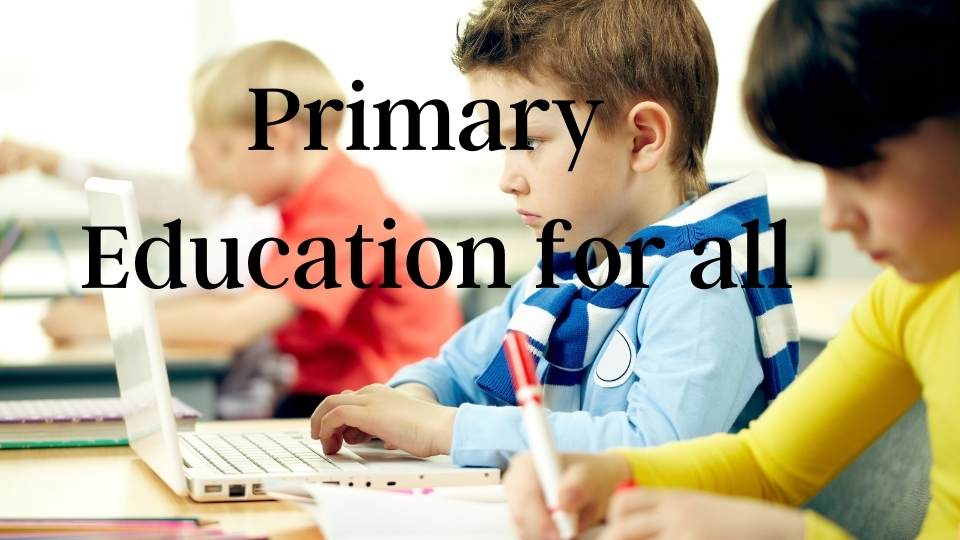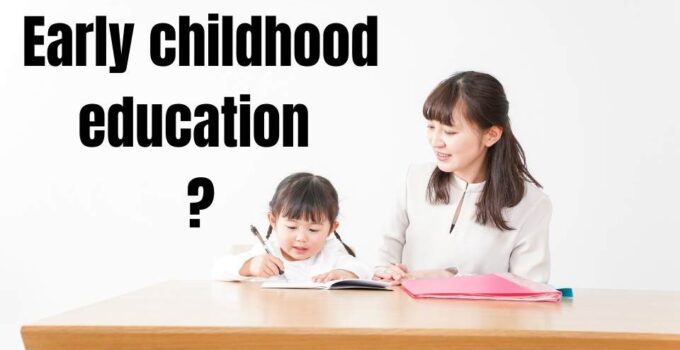Early childhood education is a broad term. And it is only used in any kind of educational program. They were even serving children in their preschool years until they were old enough to enter kindergarten. Some of these activities are designed to help preschoolers. develop socially and knowledge before entering primary school. However, it is created as a combination of experience and childhood education.
The question may come to mind, how and where is childhood education provided? Let us understand well!
It tends to be very different from one state to another – or even from one school in the same state to the next. Preschool education activities are specifically designed for three, four, or five six-year-olds. And they are provided in child care and daycare or nursery school settings and in more conventional pre-kindergarten and preschool classrooms. These programs are housed in home-based, center-based. Or public school settings. And they are offered on full-day, part-day, or even year-round schedules to include summer.
Early childhood education programs also differ in terms of sponsorship and funding. So how does it happen?
It is managed privately and may even be governed by the local school system. Or run through federally funded programs such as Head Start.
State, Federal and privately funded early childhood education programs
The Head Start Program was one of the first early childhood education initiatives created in the United States in 1965. These are federally funded education initiatives that will be funded by the Department of Health and Human Services and provide children from low-socio-economic families. The condition is wrong, or those who qualify under a specific risky class are given free in their childhood education program.
Although many childhood education activities in the United States. They are now conducted under Title I of the Secondary and Primary Act, the local education agencies apply to the state agency through Title I, which are approved by the state. Only they are financed with federal money. This is the title for the No Child Left Behind Act preschool program.
The National Institute for Early Education Research reports that 28 percent (or 1.4 million) of four-year-olds in the U.S. In 2012-13 school year were enrolled a state-funded preschool program . Even 40 states and Washington DC all offer that-funded preschool programs. Most of the state’s pre-K programs for four-year-olds continue as primary programs. And recent statistics show that 85 percent of all four-year-olds enrolled in preschool. I was enrolled in a program that received state funding.
Georgia launched a statewide public pre-K program and was the first state in the country. And allows all four-year-olds in the form to receive early childhood education. Since then, Oklahoma, New York, and Florida have followed.
Finally, early childhood education activities are conducted as part of the curriculum. And its by private for-profit companies, private schools, or churches. You may think that such childhood education activities are tuition-based.
Elements of early childhood education activities
Over the years, there has been much debate about what program qualifies as education and what type qualifies only as care. However, another concern of today’s early childhood education programs is whether they were of a high standard?
Primary education for all

(www.strategiesforchildren.org), you can call it an alliance. And they work to ensure that children in Massachusetts have access to high-quality primary education. Early childhood education is recognized as “that warm, nurturing.
And rich learning experience.” Designs that mimic the development of the child in all key developmental fields.
Currently recognized by the National Education Association. And there are five critical elements to a high-quality childhood program:
- Supports all areas of development by providing a well-rounded curriculum.
As part of a more comprehensive service network addresses child nutrition, health, and family needs.
Assess children to identify all of its concerns with improving student learning.
Employs well-educated, adequately paid teachers
Small class size. As well as providing lower teacher-child ratios.
The U.S. Department of Education recognizes that the effectiveness of early childhood programs depends on several factors:
- A quality worker
Suitable environment
Parental involvement
Continuous schedule
Proper grouping practice
This federal agency also recognizes additional features of a high-quality primary education program:
Balance between individual, large or small group activities
Is a balanced schedule. And as a result, children are not in a hurry or tired.
By making a clear statement of goals, it is a comprehensive philosophy that addresses all areas of child development. As well as building a solid foundation in language development, early literacy, and elementary mathematics.
Careful supervision of caring individuals and adults. And instruction as well as encourage entry into a safe, nurturing, and stimulating environment.
The purposeful educational activities of children are primarily engaged in sports. However, these are guided by teachers and those who work from the lesson and activity plans.
Provides snacks and nutritious food.
Staff and teachers who regularly communicate with parents and carers.
That teachers frequently check children’s progress.
For all campaigns, Elementary Education outlines high-quality early childhood learning activities and standard features of the curriculum:
Balanced:
The curriculum should provide a balance between structured activities and play. And that includes teacher- and child-directed research.
Based on the child’s developmental needs:
Materials, activities, and schedules should be appropriate for the child’s age. As well as the need to support all development domains.
Well planned:
The curriculum reflects current research on child development. And also need to include specific educational goals for children.
Preschool teachers and their role in a high-quality preschool program
A joint effort of the U.S. Department of Health and Human Services and the U.S. Department of Education. According to the Early Childhood-Head Start Task Force, preschool teachers teach and nurture our young children. These childhood educators help these young students become successful students, writers, and readers.
Preschool teachers, on the other hand, play an essential role in the lives of preschoolers. Even at that time, the right friend gets a chance to save. However, some professionals who do not have sufficient experience at home help these children:
Let’s get acquainted with books and other printed materials.
- Develop language skills
Learn letters and words
Learn to count
Increase their knowledge
Recognize the numbers
Preschool teachers do several strategies to teach the above skills. However, yours they will nurture their students’ natural curiosity and their enthusiasm for learning. Preschool teachers can meet their learning goals:
- Helping children develop speaking and listening skills
Creating children’s background thinking, knowledge, and skills
Examine children’s progress - Teaching children about books
Communicate with parents and carers - Teaching children about printing
Creating a learning environment for young children - Teaching kids about letters
Kids read aloud
Teaching children about numbers and counting
Teaching children about spoken language words
It helps start your journey to becoming a childhood educator
Ready? Take the time to find out which degree program is right for you. If you spend more time with this, then you can get the right degree program. Good luck to you.




No Responses